It seems like every other month there’s a new top-class commemorative coin from one of the masters in the field, the Mint of Poland, and this month it’s a coin continuing a trend that’s seen some serious popularity over the last 5-6 years, the Meteorite coin.
Taking many design cues from recent hits like the Canyon Diablo/Wolfe Creek range and the superb Erte Ale volcano coin, it combines the domed strike from the latter and takes it down to the one-ounce format. Combined with the inset piece of meteorite that characterises the former pair, in our view this outdoes them all with a quite excellent natural science coin. Styled like a portion of our own satellite, the Moon, the shape and high-relief design seem a perfect fit to strike a representation of its battered surface.
Likely to be extremely sought after, no doubt exacerbated by the tiny mintage of 686 (seriously, why 686???), this is another of those numismatics that cements the Mint of Poland as, not only one of the best quality strikers of coins in the business, but one that continues to pursue new ideas and implement them. Along with CIT, Art-Mint, Numiscollect and a couple of others, we’re grateful they exist to keep the market interesting. None of these companies gets it right every time, but we’re certainly glad they’re going for it on a regular basis. Long may it continue.
The coin, designed and struck by AgAuNEWS favourites the Mint of Poland, ticks many of the latest in-vogue boxes of the modern numismatic specification list.
It has a true domed convex shape, not just convex on one side. It incorporates an Ultra High Relief strike, and it has an unusual insert, in this case a piece of an actual lunar meteorite. All packaged in a nice quality wooden box, it’s easy to see the appeal, and from the images here, it looks a superbly capable example of the appropriate application of processes to a specific theme.
Shipping in April, like a lot of these Mint of Poland coins, it’s available from a just a small selection of dealers around the world. The only one we know of currently taking orders is the US-based distributor, First Coin Company who have it up for $169.90. Entering the code AGAUMOON will get you 4% off the price, so thanks to them for that.
THE MOON
The Earth’s only natural satellite, the moon is the largest in the solar system relative to the planet it orbits. The second densest after Jupiter’s Io, it’s thought to have formed just after the Earth around 4.5 billion years ago from an impact between a Mars-sized body and the Earth itself.
Set in synchronous rotation with the Earth, always showing its same face, the moon’s gravitational influence produces the ocean tides and is arguably a huge factor in the appearance of life on our planet. The Moon’s current orbital distance is about thirty times the diameter of Earth, causing it to have an apparent size in the sky almost the same as that of the Sun. This allows the Moon to cover the Sun nearly precisely in total solar eclipse. This matching of apparent visual size is a coincidence.
One of the major geologic processes that has affected the Moon’s surface is impact cratering, with craters formed when asteroids and comets collide with the lunar surface. There are estimated to be roughly 300,000 craters wider than 1 km on the Moon’s near side alone. Obviously, this leaves plenty of debris and when a new object impacts the lunar surface, some of that debris is ejected back into space. Occasionaly, it lands on Earth.
METEORITE NWA 8609
Originally purported to have been found in Morocco and brought to light in 2014, meteorite North West Africa 8609 weighed 45g and was a dark brown stone with an irregular weathered surface.

When saw-cut, you can see that the meteorite is a breccia, very similar to a conglomerate except that the particles are angular instead of rounded. It’s classified as an Achondrite.


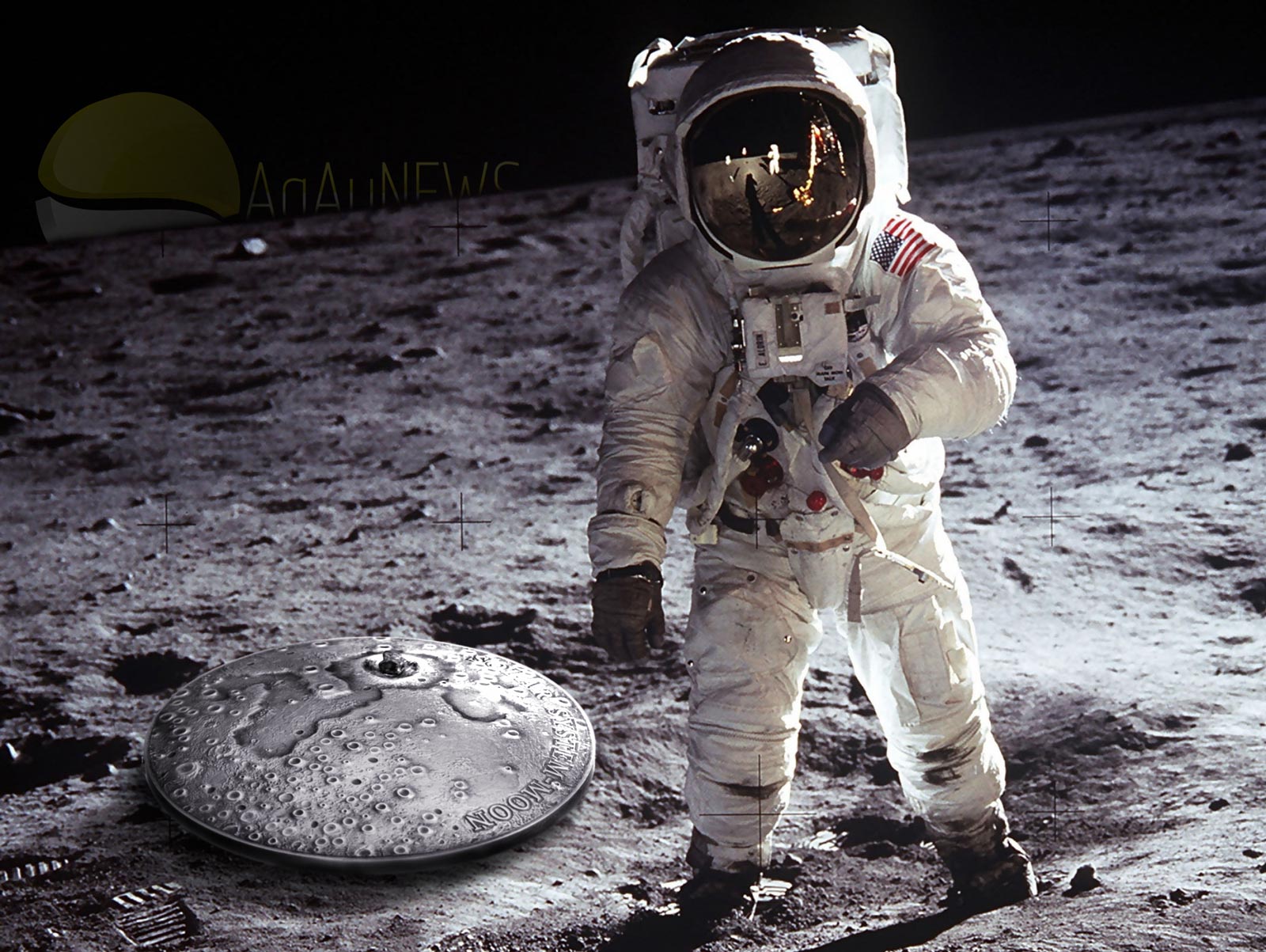

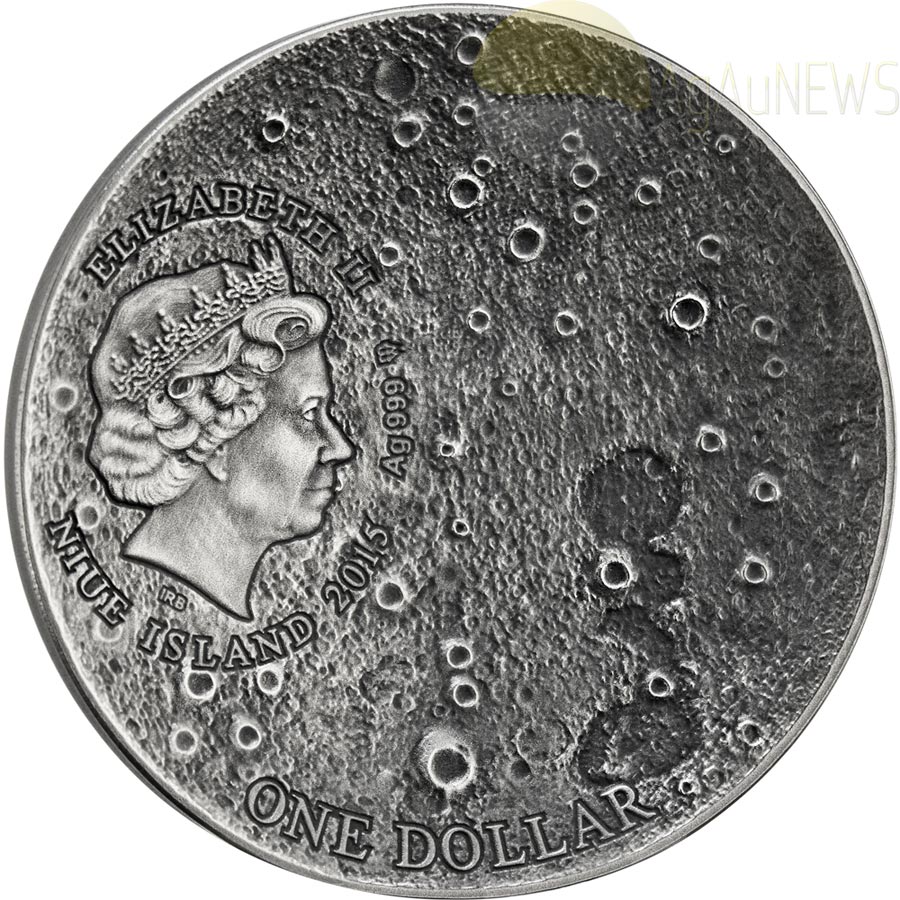
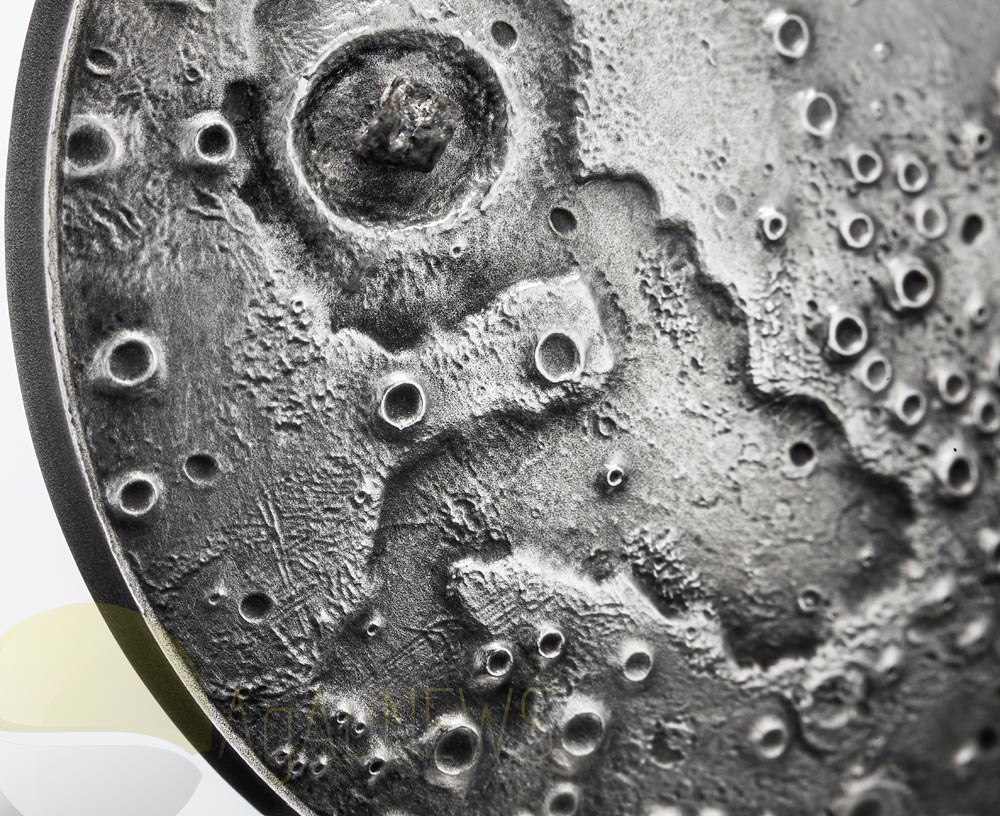
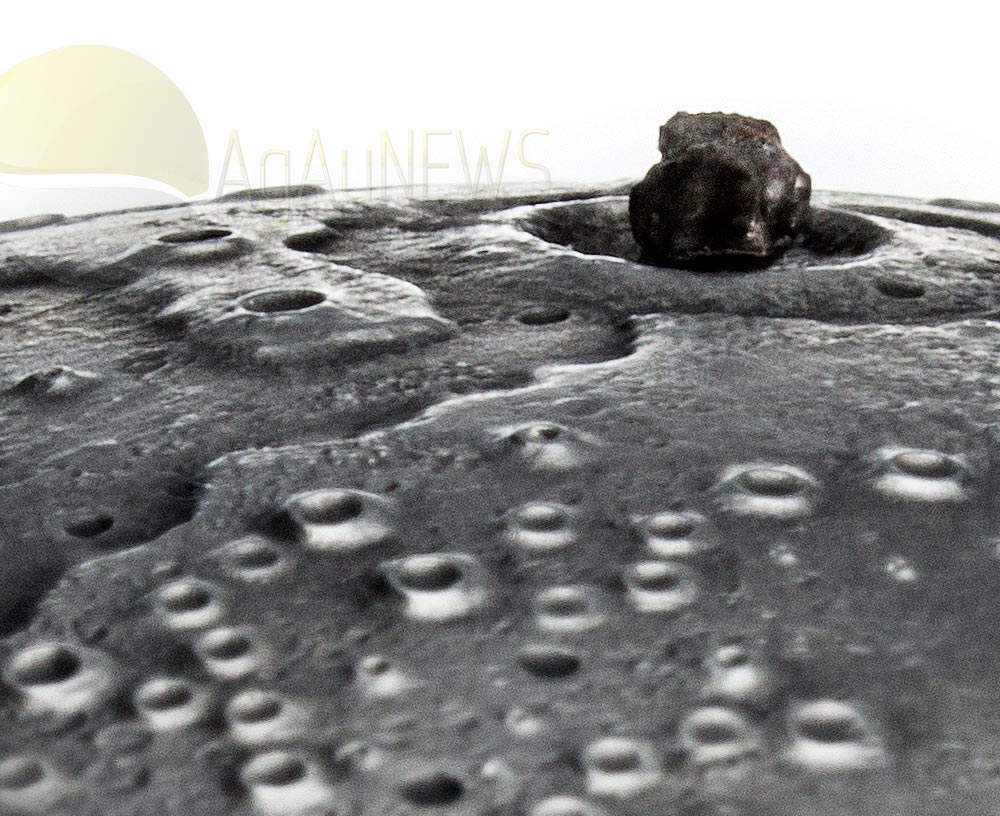
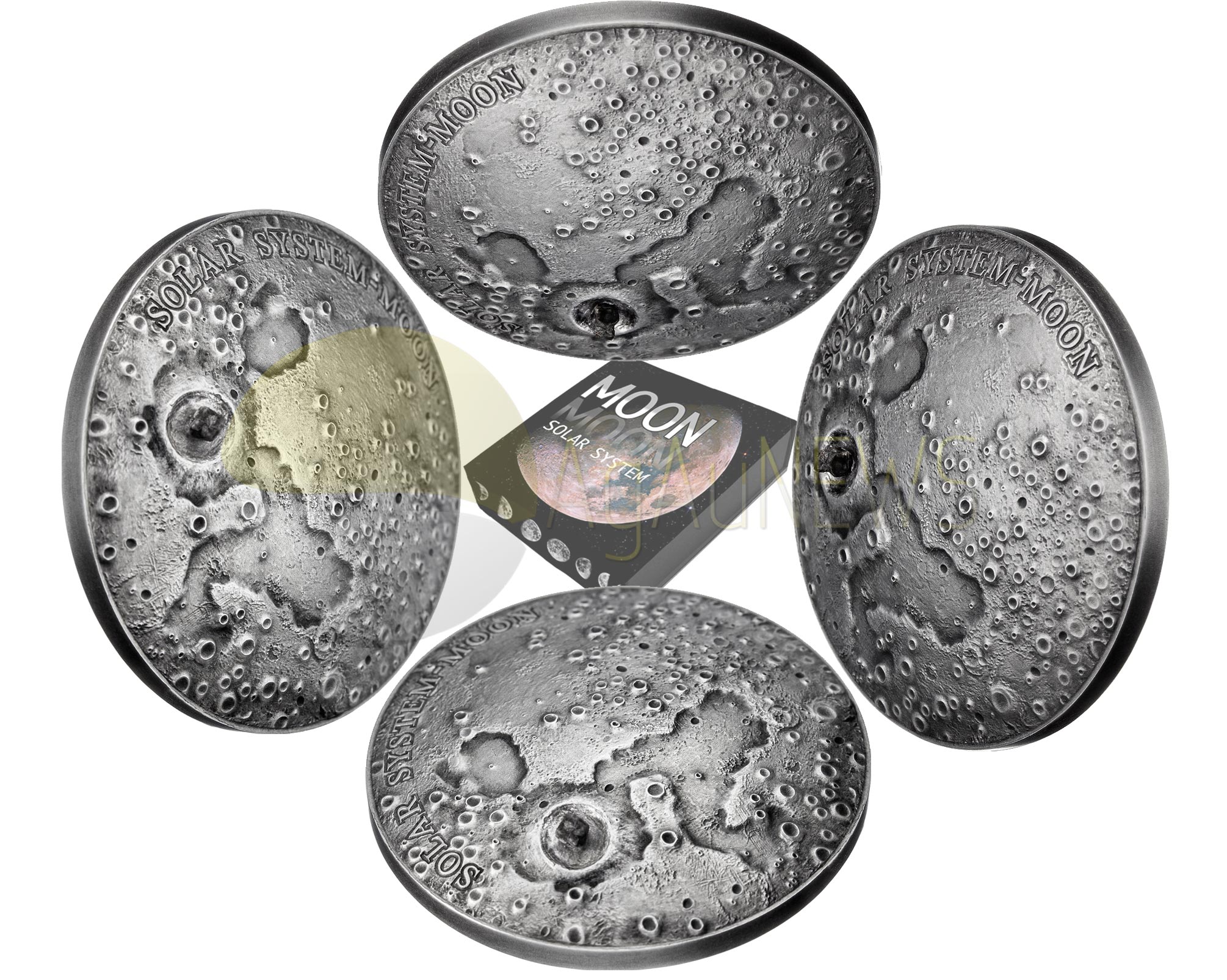
I really very much I like this coin, but why it is more expensive than Wolfe Creek Meteorite coin? So why it makes Moon coin more expensive than Wolfe Creek or Diabolo Canylon coins?
Demand basically. This is one of those coins that have captured collectors interest.
The question is that does it worth $249.90 at the price First Coin Company is selling at this time or price will go much higher sooner or later? So do you think this is a very good investment?
I’m sure price will go up to $500 and then $999 within some time as no other coins have been minted ever with such unique design. I have ordered three coins.